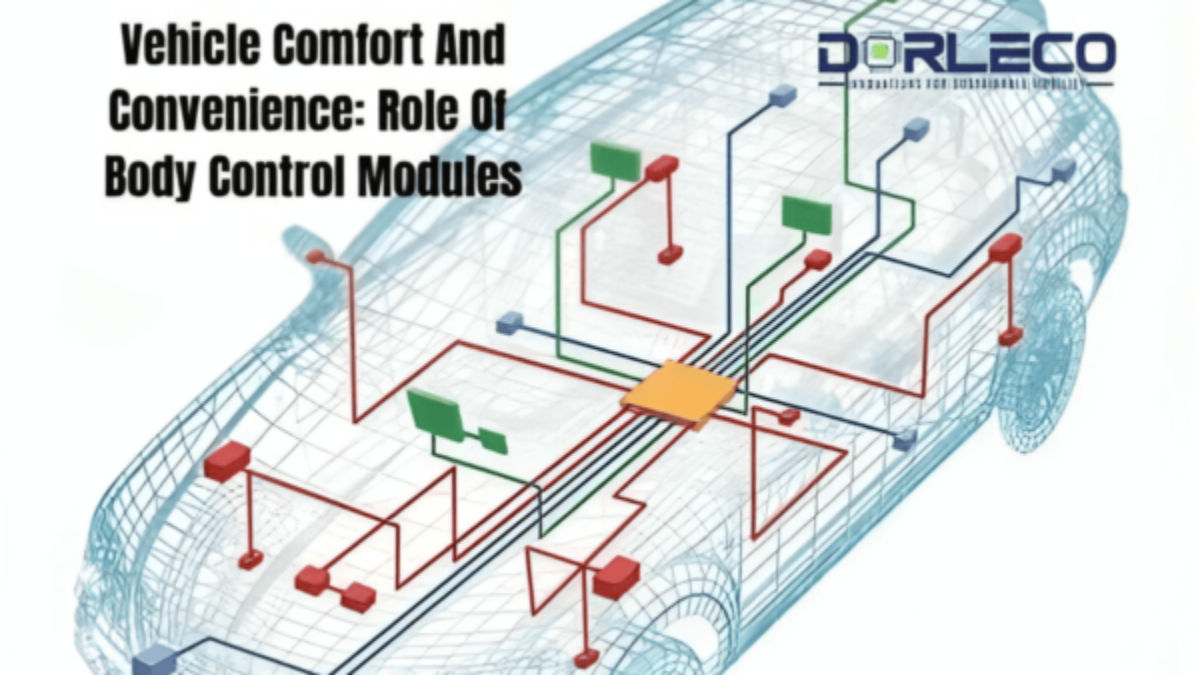Introduction:
Modern cars go beyond simple means of transportation by providing a multitude of comfort and convenience features that enhance the driving experience. Many of these functionalities are operated by the Body Control Module (BCM) in the background. We’ll look at how important body control modules are to improving driving comfort, convenience, and enjoyment in this blog post.
What is a Body Control Module (BCM)?
Numerous electrical and electronic systems are supervised and controlled by the body control module, which serves as an electronic control center for the body and interior of a vehicle. Serving as the central point, it connects and controls multiple systems, such as those for audio, climate control, door locks, power windows, lighting, and more. Like a symphony conductor, the BCM essentially coordinates the harmony of numerous operations inside the vehicle.
The Intricate Roles of BCM in Comfort and Convenience of Vehicles
- Control of Interior Lighting: One of the body control modules’ primary responsibilities is to regulate interior lighting. It controls the on/off function of the cabin lights as well as offers convenience features, including automated dimming, customized interior ambient lighting, and delayed illumination to enhance comfort when driving at night.
- Sunroof and power windows: The BCM facilitates the operation of the sunroof and electric windows. One-touch operation, precise control, and anti-pinch functionality are guaranteed, making it simple for residents to operate windows and sunroofs.

- Door Locks and Keyless Entry: The BCM manages auto-locking functions, remote key fobs, and keyless entry systems. It manages door locking and unlocking and may include tasks like passive entry, which uses the key fob to open the car’s doors as you approach.
- Climate Control: In many modern cars, complex climate control systems maintain a comfortable interior temperature. The BCM interacts with seat warmers, coolers, the HVAC system, and fan speed to provide the most comfortable temperature.
- Wipers and Washers: The body control module likewise directs the wiper blades and washers. It ensures the appropriate wiper speed and activates the washers as needed to improve vision during inclement weather.
- Audio and infotainment systems: The BCM is also in charge of your car’s infotainment and music settings. It manages the radio’s power supply, speakers, and touchscreen displays to deliver a seamless audio-visual experience.
- Safety features: Certain vehicles pair the BCM’s functions with rain-sensing wipers, tire pressure monitoring, and automated headlights. These features enhance both safety and convenience.
- Power seats and mirrors: The BCM is in charge of ensuring that the power-adjustable seats and mirrors in your car operate smoothly and accurately.
- Anti-Theft and Security: BCMs are often used in alarm systems, car immobilizers, and theft deterrents.
- Personalization: A lot of modern cars have a BCM that lets you change a lot of different settings. This involves adjusting the seat, mirror angles, and infotainment settings to suit the preferences of various drivers.
Future Trends and Advanced Features:
The purpose of body control modules is constantly evolving because customer demands are shifting and as technological advancements continue to emerge.
- Telematics and connectivity: As the Internet of Things (IoT) develops, BCMs are integrating more and more with telematics and connectivity systems. This opens up possibilities for things like wireless software upgrades, remote vehicle monitoring, and potentially using smartphone apps to control some car functions.

- Autonomous and driver assistance features: As automobiles become increasingly autonomous, BCMs will play a critical role in managing driver assistance systems such as adaptive cruise control, lane-keeping assistance, and parking assistance.
- Energy Efficiency: Engineers design BCMs with energy-saving technologies to lessen the strain on the vehicle’s electrical system. This is particularly crucial as vehicles become increasingly electrified, including hybrid and electric drivetrains.
- Better Diagnosis: Diagnostic features equip advanced BCMs to identify and report issues with several different car systems.As a result, this facilitates more accurate and speedy maintenance and diagnosis.
Difficulties and Considerations:
Although BCMs provide several advantages, there are some challenges and considerations when using them:
- Complexity: As cars become more technologically sophisticated, BCMs increase in complexity. This could make diagnosis and repair more challenging and call for the use of specialized skills and tools.
- Integration: BCMs need to operate with many automotive systems and components smoothly. Compatibility issues can arise, specifically when retrofitting or upgrading older cars.
- Security: BCM security and the security of their communication networks become increasingly important as connections grow. Protecting against cyber threats is a never-ending challenge.
- Reliability: Since BCMs are essential components for the mission, their failure could cause several inconveniences in addition to potential safety issues. At all costs, their dependability ought to be ensured.

Conclusion:
Modern cars’ body control modules are like unsung heroes—they simplify and improve the comfort of our regular travel. The BCM controls everything related to our driving experience, including interior lighting, safety, efficiency, entertainment, and climate management. BCMs will keep adding even more state-of-the-art functions and integrating with recently released automotive technology as technology develops. Thus, the BCM quietly enhances comfort by managing locking, temperature, and seat adjustments.


